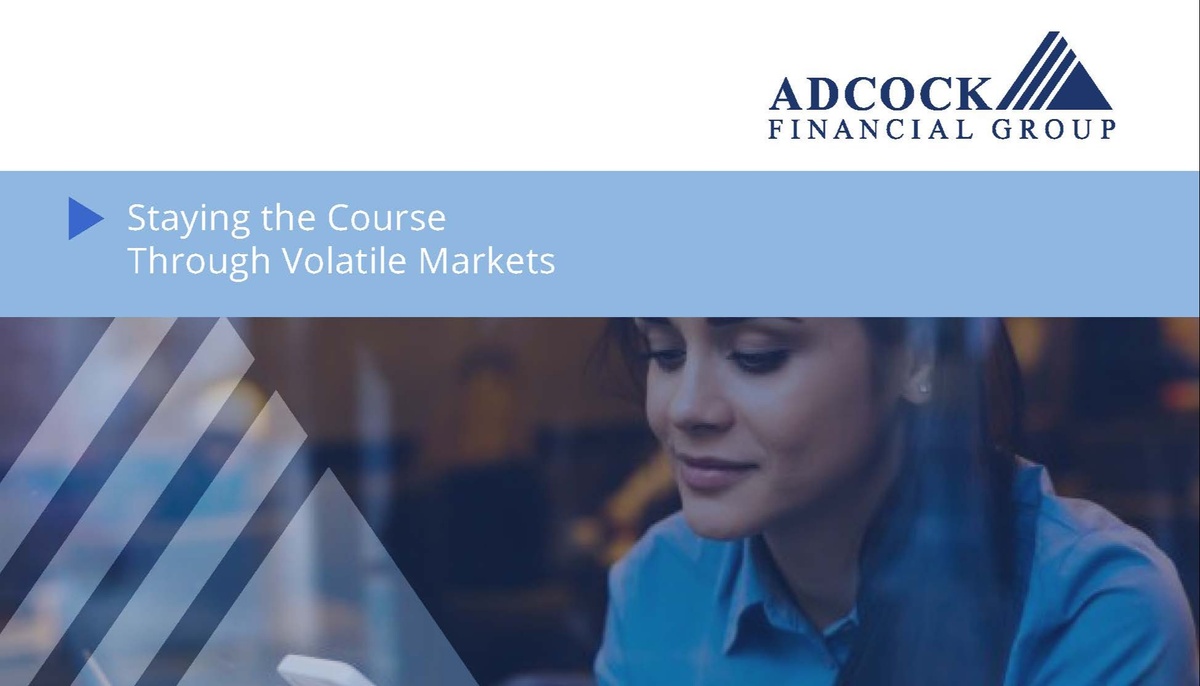Turbulent times can bring turbulent markets. Many factors cause chaotic swings in the investing world including housing bubbles, political elections, international instability, and as we have seen recently, a global health pandemic.
Despite the financial queasiness this can have, experts consistently have one piece of advice for investors: stay calm and stay the course. Maintaining a long-term investment strategy can help weather the storm of a volatile stock market, whereas reacting irrationally, or panicking, is the last thing investors should do.
History Tends to Repeat
There are a few ways to keep nerves at bay amidst a sea of daunting headlines.
First, a historical review shows that market fluctuations are normal. This should serve as a comforting reminder during unstable conditions. According to Fidelity, “...while market downturns may be unsettling, history shows stocks have recovered and delivered long-term gains.”[1]
From 1995 to 2019 (a period that includes major drops due to the tech bubble burst, the 2008 market crash and the Great Recession), the average growth rate of the S&P 500 (which tracks the stock performance of 500 large companies on U.S. stock exchanges) was 11.9 percent (including dividends).[2]
While no one can predict the stock market with absolute certainty, the significant crashes of the last century all saw periods of recovery. For example, after the 2008 market crash, the recovery began almost immediately and achieved an eventual increase of 178% in 5-year returns.[3]
These past events reinforce the importance of focusing on long-term financial strategies and goals, not short-term fluctuations. The markets will have bull and bear runs which need time to play out without trying to anticipate short-term trends.
Past performance is no guarantee of future results.
Don’t Try to Catch a Falling Knife
Another potential mistake that investors can make is to stop saving during a market downturn. On the heels of the 2008 crash, one study found that more than a quarter of respondents either stopped saving for retirement or stopped adding to their 401(k).[4]
However, had they stayed put, their returns would have likely had substantial gains.
Fidelity Investments reports that the average 401(k) retirement plan balance rose by 466% to $297,700 between 2009 and 2019. Furthermore, the average retirement savings of millennials, many of whom would have been at the early stages of their work career, would have experienced an upward portfolio shift of 1,762% from $7,000 in Q1 of 2009 to just under $130,000 in 2019.[5] While past results are no guarantee of future results, it’s important to point out in this example that when participants stay the course, it can really pay off.
A popular way to continue savings momentum when nerves are being tested is dollar-cost averaging, or in other words, investing a fixed amount on a regular schedule (e.g. per pay period) that generally results in buying more shares when prices are low and less shares when they are high.
Dollar-cost averaging is a stabilizing approach. It can take away some of the fear of timing risk and become less of a system shock than lump sum investing. Dollar-cost averaging does not ensure a profit and does not protect against loss in declining markets.
You Need Lemons to Make Lemonade
Downturns are a perfect time to consult with a financial professional to review different strategies and also rebalance your portfolio. It might be time to look at investments that have lost value. This can help to manage risk exposure and could be an opportunity to reposition the portfolio for a potential recovery.
Another possibility is to consider a Roth conversion. If your plan allows for a Roth conversion — moving money from a 401(k) to a Roth 401(k) account — then a downturn could help. A conversion in a downturn might result in a lower tax bill for the same number of shares sold, and then the participant can experience the benefits of a Roth account, allowing qualified distributions of future growth to be tax free.[6]
Market downturns are a part of any investing lifecycle so it’s best to keep a steady hand, consult with your advisor and consider all options so you can weather through this market cycle - and the next one.
Information provided herein is not, and should not be regarded as, investment advice or as a recommendation. Investing involves risk, including potential loss of principal.
Adcock Financial Group
H. Brian Adcock
311 W. Fletcher Avenue
Tampa, FL 33612
813-935-4091
www.adcockfinancial.com
Securities offered through Kestra Investment Services, LLC (Kestra IS), member FINRA/SIPC. Investment advisory services offered through Kestra Advisory Services, LLC (Kestra AS), an affiliate of Kestra IS. Adcock Financial Group is a member firm of PartnersFinancial. Kestra IS and Kestra AS are not affiliated with Adcock Financial Group or PartnersFinancial. Kestra IS and Kestra AS do not provide tax or legal advice. https://www.kestrafinancial.com/disclosures
This information was developed as a general guide to educate plan sponsors and is not intended as authoritative guidance or tax/legal advice. Each plan has unique requirements, and you should consult your attorney or tax advisor for guidance on your specific situation.
©401(k) Marketing, LLC. All rights reserved. Proprietary and confidential. Do not copy or distribute outside original intent.



